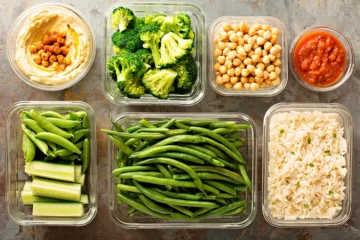How to Design a Beautiful and Functional Vegetable Garden Layout
Firstly, Vegetable gardening is not only a rewarding hobby but also a sustainable way to provide fresh produce for your family. Secondly, However, designing a vegetable garden layout that is both beautiful and functional requires careful planning and consideration. Thirdly, From maximizing space to selecting the right plants. Every aspect plays a crucial role in creating an efficient and visually appealing garden. Lastly, In this comprehensive guide, we will explore step-by-step how to design a vegetable garden layout. that not only harvests but also adds aesthetic value to your outdoor space.
1. Assessing Your Space:

Firstly, Earlier than diving into designing your vegetable lawn format. It’s critical to assess the available area and its characteristics. Secondly, bear in mind factors including sunlight exposure, soil first-class, drainage, and accessibility. Thirdly, Take measurements of the place to determine the scale in your lawn beds and pathways. Lastly, know-how your space will assist you’re making informed decisions throughout the layout technique.
2. Choosing the Right Location:

Firstly, Choosing the right vicinity to your vegetable garden is essential for its achievement. Secondly, preferably, pick out a niche that receives as a minimum 6-8 hours of sunlight according to day. Thirdly, as most greens require sufficient sunlight for greatest growth. Fourthly, ensure the place has exact drainage to save you waterlogging, as excess moisture can cause root rot and other issues. Moreover, Lastly, recall proximity to water sources for clean irrigation and accessibility for upkeep duties.
3. Designing Garden Beds:

Firstly, Lawn beds are the foundation of your vegetable garden format and play a vast position in its functionality and aesthetics. Secondly, Raised beds are a popular choice as they offer better drainage, soil aeration, and weed manage. Thirdly, Determine the scale and form of your beds based totally on the available space and your gardening options. Lastly, remember incorporating pathways among beds to facilitate smooth get admission to and preservation.
4. Planning Pathways and Access Points:

Firstly, Pathways are essential for navigating through the garden and having access to distinctive areas with out negative plants. Secondly, layout pathways extensive enough to deal with wheelbarrows and garden tools for clean transportation of soil.Thirdly, compost, and harvested produce. Lastly, select long lasting materials together with gravel, wood chips, or paving stones for pathways, ensuring they’re strong and easy to keep.
5. Companion Planting and Crop Rotation:

Firstly, Partner planting and crop rotation are crucial practices for optimizing plant health and yield in your vegetable lawn. Secondly, research associate plants that benefit every different with the aid of repelling pests. Thirdly, attracting useful insects, or improving soil fertility. Plan your garden format therefore, grouping well suited plant life together to create a harmonious and symbiotic ecosystem. Lastly, moreover, rotate crops annually to save you soil depletion and reduce pest and sickness buildup.
6. Maximizing Space with Vertical Gardening:

Firstly, Vertical gardening is an exquisite method for maximizing space in small gardens or urban settings. Secondly, make use of trellises, arbors, and vertical systems to aid vining vegetation along with tomatoes, cucumbers, and peas. Thirdly, Vertical gardening no longer handiest conserves ground area however additionally provides size and visual hobby to your lawn format.Lastly, make sure adequate support for vertical structures to withstand the load of plants and end result.
7. Incorporating Aesthetic Elements:

Firstly, Whilst capability is important, don’t overlook the classy element of your vegetable garden layout. Secondly, contain decorative elements inclusive of ornamental borders, colourful planters, and inventive focal factors to enhance visual appeal. Thirdly, pick out plant life with varied textures, heights, and shades to create a visually alluring and dynamic lawn design. Lastly, integrate ornamental flowers and herbs among vegetable plants to attract pollinators and useful insects whilst adding beauty to the garden.
8. Implementing Watering and Irrigation Systems:

Firstly, Proper watering is vital for the fitness and vitality of your vegetable garden. Depending on your weather and water availability, pick out the appropriate watering technique along with drip irrigation. Secondly, soaker hoses, or hand watering. deploy irrigation structures that supply water directly to the root quarter of plant life. Thirdly, minimizing water waste and promoting green water use. Lastly, display soil moisture ranges regularly and regulate watering schedules as needed to save you under or overwatering.
9. Maintaining and Care:

Firstly, Regular preservation is prime to making sure the achievement of your vegetable lawn layout. Secondly,enforce a ordinary care schedule that includes obligations consisting of weeding, pruning, fertilizing, and pest manage. Thirdly, monitor plants for signs and symptoms of pests, sicknesses, or nutrient deficiencies, and take proactive measures to cope with issues promptly. Lastly, Mulch garden beds to suppress weeds, hold moisture, and alter soil temperature, promoting healthful plant growth.
IN LAST:
Designing a beautiful and practical vegetable garden format requires cautious planning, creativity, and interest to detail. via assessing your space, selecting the right area, designing lawn beds, making plans pathways, and incorporating vertical gardening and aesthetic factors, you could create a effective and visually appealing lawn that enhances your outside area. With right preservation and care, your vegetable garden will flourish, supplying you with a bountiful harvest of fresh, homegrown produce for future years.




0 Comments